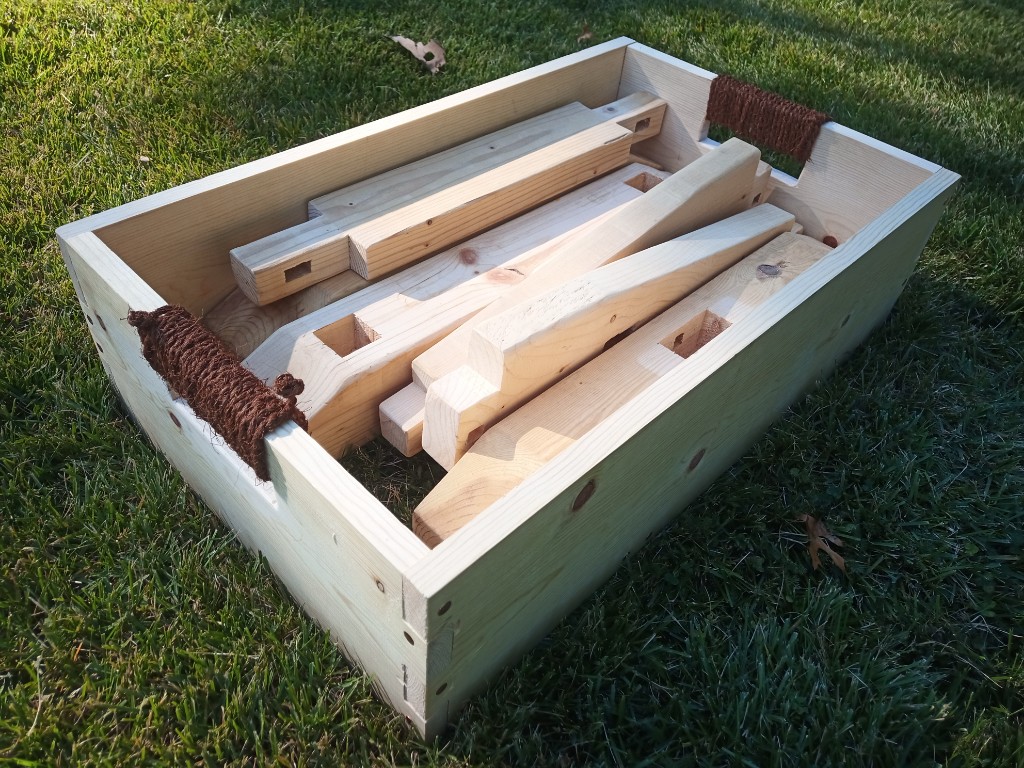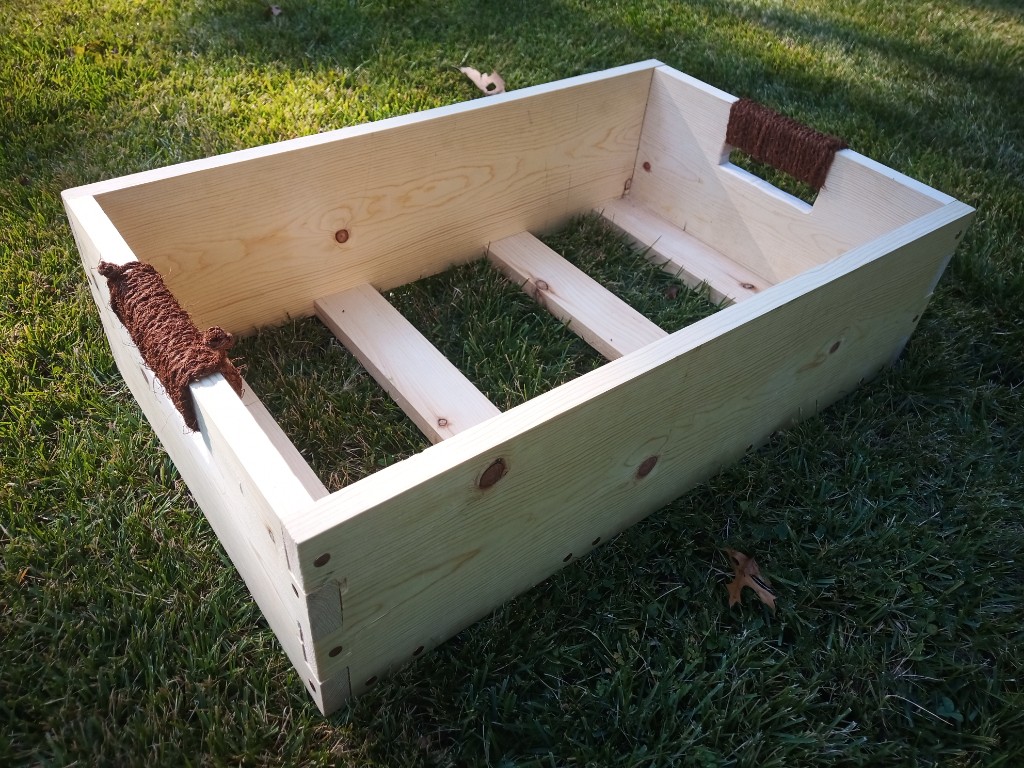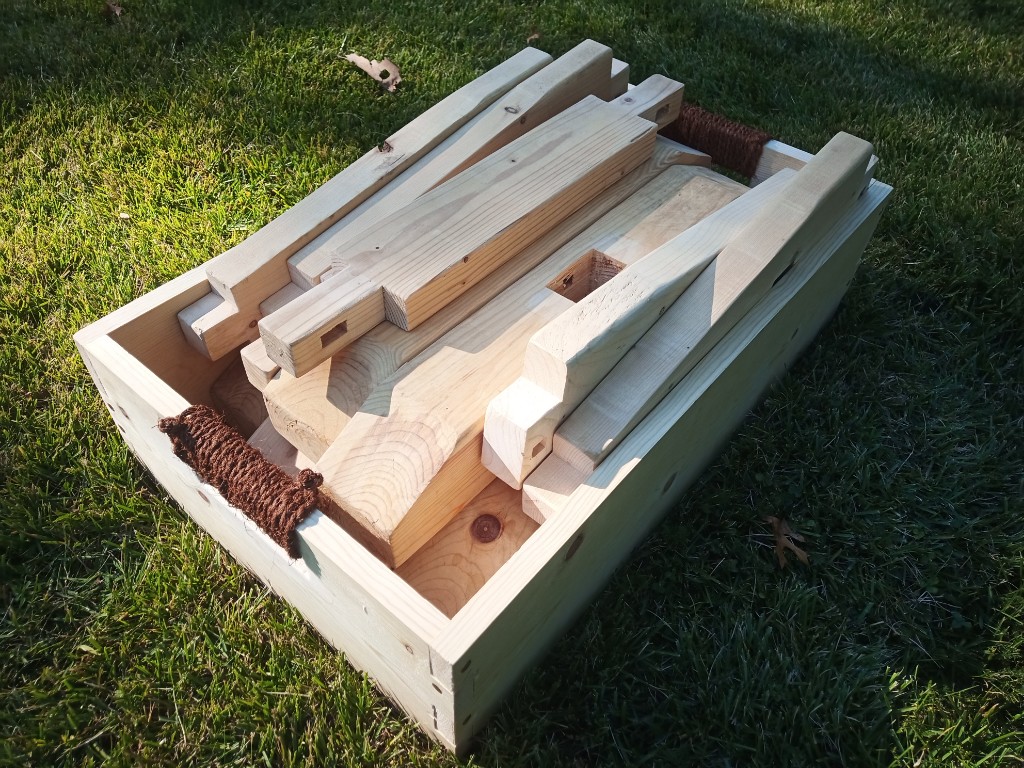So, the takedai I have actually comes apart into pieces, so you can travel without having this large loom-thing in your vehicle. It didn’t come with a box or anything, though, so I would be traveling with a pile of loose parts like this:

If only I knew how to make some kind of box… oh wait, I do! I calculated that I needed a box about 4.5″ deep, 30″ tall, and 22″ wide. I thought I would have to buy wider lumber and cut it down to 4.5″ wide, but the store I went into actually had 1-by-5 in stock for some reason. How weird is that? The large faces are “masonite” style hardboard. A couple of sheets of that are cheaper than a similar amount of plywood, and about as durable. The “rim” is some of the 1×5 that I actually did cut down to width in the band saw.

I cut the hardboard to size first, taking the thickness of the wood into account. I actually broke out the circular saw for that, since it was faster than getting the table saw set up. Then, I built the frame, gluing and nailing (with a nail gun) the frame pieces in place around one side. Screws at the corners secure the butt joints. Once that was done, I glued and nailed on the other side, completing the box. Next, I cut six inches off the top of the box, and built the two rims around the openings of the body and lid portions of the box. The rims are glued in place, and secured with screws.Finally, I added the latches to secure the lid during transport.

I went for a tall narrow box instead of a flat wide box because I felt it would be easier to slide the pieces in than to stack them up. I kind of feel I was right. Slide in the two big pieces, then put the long pieces long the side. It works pretty well, and it’s easier to carry vertically than horizontally especially after I messed up the tendons in my lower arms lifting tabletops five years ago.

Here’s another angle so you can see how neatly it all fits in.






